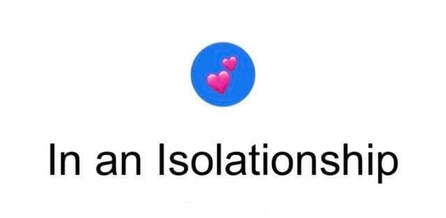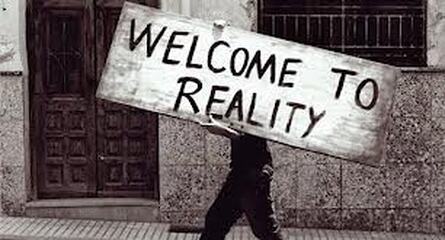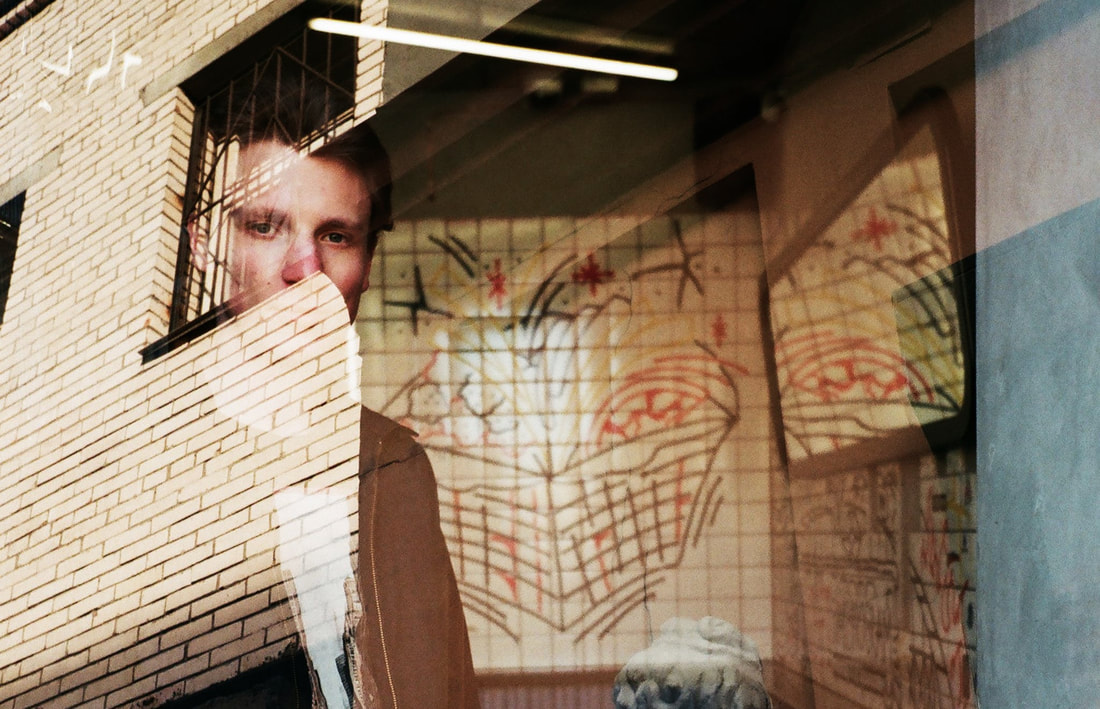|
My daughter is a guinea pig. This afternoon in the bright sunshine, I invited her to take part in an experiment. First, we stepped out into the street and, gesturing to a line of cars parked at the roadside, I asked, “If you were to buy a car, what colour would you choose, or definitely not choose?” She answered, “I’d love a white car.” “OK,” I replied, “let’s go for a walk into town and back. Your task is to count every white car that we pass. If you have the same number as me when we get back here, I will give you £10. How does that sound?” She grinned and willingly agreed.
An hour later, we stopped back where we had started and I asked her, “So, how many red cars did you see?” She looked at me blankly. “I didn’t see any red cars. I counted 206 white cars.” In fact, we had passed 93 red cars, yet she had been so focused on the white cars that she hadn’t seen a single one. This simple experiment illustrates an important psychological phenomenon known as selective attention: “The ability to pay attention to a limited array of all available sensory information…a filter that helps us prioritize information according to its importance.” (Bertram Ploog, 2013). Gestalt psychotherapist Geoff Pelham comments that, in any given relationship or situation, we notice who or what matters most to us (The Coaching Relationship in Practice, 2015). This idea of who or what matters most reflects beliefs, values and emotions. In this exercise, my daughter was influenced and motivated by her beliefs (that this experiment would serve some useful purpose), values (the prospect of a £10 reward) and emotion (her choice of a colour she likes). These factors combined to ensure concentration on a task (counting white cars) that required selective attention. Why is this insight significant in our work with people? The principle extends beyond literal-visual perception to deeper psychological processes too. Our beliefs, values and emotions subconsciously influence our focus and act as filters. We construe personal-shared narratives based on what we perceive. Such narratives appear to us as-if reality, as-if totality, and often without any awareness of who or what we have excluded. As such, narratives always point to and reveal, implicitly, who and what matters most to a person, group or culture, rather than to a definitive account of reality per se. A key question is, therefore: who or what are we, and others, not-noticing? If we can enable a shift in perception, a re-shaping of a narrative, what then becomes possible? Interested to do further reading in this area? See: The Art of Looking: Eleven Ways of Viewing the Multiple Realities of our Everyday Wonderland.
12 Comments
Lockdown, as a self- or state-imposed isolation from other people, is a physical response to a physical threat, a measure taken to limit the impact of a clear and present danger. The current, global, disease crisis-response is a very explicit case in point. Yet every action risks creating its own unintended consequences. Take, for instance, mental and physical health problems that may well result from media-induced fear and panic; sustained social isolation; reduced physical exercise.
Cast your eye to the poorer countries and communities in the world, and the list grows much longer. You can add stress from lost essential livelihoods; lack of access to food, safe water, sanitation and health facilities; increased risks of corruption and exploitation of the most vulnerable people. So, in the face of such existential threats, what can we do? William Glasser, a choice-theory, relational psychotherapist, offers useful insight in his 3Rs formula: Reality + Responsibility + Relationship. Reality: Look beyond our own immediate thoughts, feelings and circumstances to see, where possible, a bigger picture. Reflect critically on what we see and hear in the media. Keep things in perspective. Responsibility: Acknowledge that our actions in the face of adversity represent choices. We can make different choices. Do what is right, not just what is expedient. Relationships: Look outwards when tempted to close inwards. Ask for support. Offer it too. Keep in touch. Pray. Would you find coaching with the 3xRs helpful? Get in touch! [email protected] It often happens in leadership, training and coaching conversations. ‘So – what will you do?’, or ‘What’s your next step?’ The person responds with, ‘I’ll do X’ or, ‘I plan to do Y’ and we both leave feeling satisfied we’ve reached a conclusion. Yet we check in a month later and, guess what: nothing has happened. It’s a bit like those New Years’ resolutions that are great in principle but vaporise in practice. What’s going on here? Is the answer here to press for detailed goals and action plans? We could. We could also probe more deeply at the decision-action phase. Here are some samples of probing questions: ‘Given everything else on your plate at the moment, what is it going to take in practice to move this up your priority list?’, ‘Compared to everything else you could pour your time and energy into at the moment, what is going to make this most worthwhile for you/others?’ or ‘Who or what is likely to prevent you doing this in practice – and what can/will you do about that?’ We could think of these as contextual questions or dependencies. They feature as the reality-check in 'GROW' and 'SMART'. Questions with more of a psychological orientation could include, e.g. ‘How much energy do you have for this?’ or, ‘How much do you really want this?’ or ‘On a scale of 1-10 how likely are you really to do this?’ We tend to use them, if at all, during the exploration phases of a conversation yet don’t often circle back at the end. It’s as if we take signs of decision at face value. So, next time you reach the decision-action phase of a conversation, try a quick pause before you and the client stand up, shake hands and leave the room. Look – again – before you leap. If a person seems hesitant or lacks energy, go back to goals, aspirations, hopes and fears. How convinced is the person by their chosen route forward? How inspired do they feel to take the next step? Are there any relational, cultural, contextual or resource-linked realities that need revisiting first? How do you spot, address and avoid falling into the delusion trap?
The problem with being deluded is that, when we’re in a deluded state, we don’t know we’re deluded. The word delusion comes from the same Latin root as deceived. If we knew we were being deceived when we are being deceived, we wouldn’t believe that which deceives us. So delusion can be something about being deceived and about deceiving ourselves too. It carries negative connotations of being firmly convinced of something that doesn’t correspond with reality or truth. The recent UK referendum on EU membership drew this phenomenon into sharp focus. After the results were announced, people on both sides of the debate commented that they were completely bemused that people on the other side had voted differently. Given that, in each side’s view, the ‘correct’ decision was clear, unambiguous and self-evident, they concluded that the most plausible explanation for the difference was that people on the other side had somehow been deceived. This begs interesting questions about who was deluded in making such claims and how we could know for sure what the reality and truth were in order to decide. Is there a definitive, unequivocal truth to be unearthed in such circumstances? Or is what appears to us as truth a reflection of how we construe complex and ambiguous ‘facts’ psychologically and culturally to create a coherent narrative that resonates with our beliefs and feelings and provides a sense of meaning for us? There are two important signals I have found it useful to look out for. If a person states an opinion as fact, I will challenge and invite them to personalise it: e.g. ‘This meeting is boring’ to, ‘I’m feeling bored in this meeting.’ If a person uses a word or phrase like, ‘Clearly’ or, ‘Obviously’, I will challenge them to reframe and personalise it too: e.g. ‘Clearly’ to, ‘It seems clear to me that’. This simple, practical technique can create a very significant shift in awareness, perspective – and choice. ‘Reality is merely an illusion, albeit a very persistent one.’ – Albert Einstein
I saw a blog by Tony Clark on Heart of the Art this morning and found it so inspiring that I thought I'd share an extract here: Take a minute to scan your surroundings. Are you in a familiar place or somewhere new? Stop reading this, and just look around you. Pick out an object, maybe something you hadn’t noticed before, and focus your attention on it. If you really focus, it’ll get brighter and more “real” than it was when it was just an unnoticed piece of the background noise of your life. Now, try to view your surroundings from the point of the object. Some people can do this with no effort, and for others, it takes some concentration. Depending on how adept you are at focusing your concentration, you may notice a slight shift in your perception – a weird jump in realty, where you are suddenly viewing the world from a different perspective. What do you think..? It’s Christmas Day and I could have better used the title Christmas mess-edge for this short piece. The story of Jesus Christ isn’t just a sweet and sentimental account of a baby boy born in Bethlehem 2000+ years ago. If it’s true, it’s about God entering the very real messiness of our lives and world and offering the potential to transform them into something completely new. Something beyond our wildest dreams, hopes or expectations. Something that stretches and transcends the boundaries of all human existence and experience.
I’ve known something about this notion of stretching boundaries over this past year, about extending the edges of my own experience. I bought a new bike in the spring, challenged myself to cycle over 1000 miles in 6 months and over 50 miles in a single ride. I had never done anything like that before and yet I did it. I also challenged myself to swim 1 mile 3 times in the same week. And I did it. It felt like I had crossed over an important physical and psychological line, achieving things that had previously felt impossible for me. I wrote and had published my first article with the British Association for Counselling and Psychology (BACP). I’d written lots of articles for different publications before but this felt like the next step up in a professional field that sits close to my heart. The editor of Coaching Today invited me to write on spirituality and I jumped at the chance. To top it off, I did my first ever series of radio interviews on spirituality too. It was a great opportunity and a novel experience so sit in a recording studio and to share my beliefs openly on air. And if that was the end of the story, there would be no need for a Jesus, at least for me. But it’s far from the end. I’ve struggled and failed on so many fronts. Sometimes, I haven’t even struggled when I have known I should. I’ve known deeply and personally what Francis Spufford aptly calls the universal ‘human propensity to f* things up’ (Unapologetic, 2013). At times, I’ve failed in relationships, made mistakes at work, fallen short of my own standards, spoken when I should have kept quiet and kept quiet when I should have spoken. What’s more, one of my closest friends has fought courageously with terminal illness. I’ve felt hopeful and helpless, trying to offer support where I could yet knowing I can’t make it OK. I’ve yearned to take the anxiety away but known that I can’t. I’ve watched Syria in the news, the damage that human beings are able to inflict on each others’ lives, on whole countries and regions. I’ve felt impotent and confused. Not all the time, but enough to know that redeeming the world is something I can take part in yet, ultimately, lies well beyond me. And so as I reflect on Christmas, I know what it is to be an aspiring yet fragile human being. I’ve felt exciting moments on the edge of success and have known what it is to screw up and need forgiveness. I have felt the amazing love of others, often undeserved yet tangible all the same. At that first nativity, I believe God himself entered the messy complexity of our lives and world with the most profound message of love and hope possible. Not just in words but in a life well-lived and a promise of presence and eternal life. Merry Christ-mas! What is real, what is true, how can we know? These are questions that have vexed philosophers for centuries. In more recent times, we have seen an increasing convergence between philosophy and psychology in fields such as social constructionism and existential therapy. How we experience and make sense of being, meaning and purpose is inextricably linked to how we behave, what we choose and what stance we take in the world. As a Christian and psychological coach, I’m intrigued by how these fundamental issues, perspectives and actions intertwine with my beliefs, spirituality and practice. Descartes once wrote, ‘If you would be a real seeker after truth, you must at least once in your life doubt, as far as possible, all things.’ It’s as if we must be prepared to suspend all assumptions about ‘what is’, to explore all possibilities and dare to think the unthinkable in order to grow and make our best contribution. Things are not always as they at first appear. There are sometimes multiple explanations for the same phenomenon, depending on the frame of reference we or others use to interpret it (see, for instance, Gareth Morgan’s seminal work, Images of Organisation, 1986). We are sometimes blinded to what’s in front of us by our prejudices, preconceptions, cultural constraints or rigid views of the world. It can be hard to maintain healthy scepticism without cynicism. I see it with clients, sometimes in myself too. A sense of being trapped by a fixed Gestalt, a cognitive distortion, an inherited or learned belief system. An inability to see, to recognise the box that we’re in, never mind to see or think outside of it. An avoidance of deep, difficult questions because of the discomfort, confusion or anxiety they may evoke. If we’re not careful, if we can’t find the right help when we need it, it may limit our lives and our learning. I think this is where coaching can play a very important role, helping pose and address some deep questions. Nick Bolton commented insightfully in Coaching Today that, ‘To explore a coaching issue existentially is to understand the relationship that the presenting problem has to the human condition to which it is a response, and to remain focused on enabling a change of perspective that allows the client to move past their current challenge.’ He also provided some helpful examples: ‘For instance, how is a client’s procrastination around something that seems to matter to her a failure to remember that life comes to an end? How is a client’s need to be unconditionally loved by his partner an attempt to deal with existential rather than interpersonal isolation? (And the solutions are very different things). How is someone’s lethargy simply a part of their fear of taking responsibility for their life?’ (July 2013, p17) A metaphysical, existential or theological dimension can shift the entire paradigm of the coaching conversation. The question of whether a client should apply for this or that job is influenced by her sense of purpose. If she is willing to consider that God may exist and have a plan for her life, the whole situational context will change. It can be a dizzying and exciting experience, yet it’s really a question of how courageous and radical we and the client are prepared to be. I had precautionary tests this week for a potentially life-threatening condition. Thankfully, the results turned out to be OK but it’s experiences like this that often bring existential issues into sharp relief. Existential coaching focuses on helping a person explore his or her own sense of ‘being in the world’, that strange psychic awareness that we are in the world before what we are in the world. At times, such awareness can feel mysterious, unfathomable, disorientating and anxiety-provoking. It’s like one of those moments when, as a child, I gazed up into the night sky, saw the stars and the enormity of space, imagined space and time going on forever and felt dizzy and perplexed by it. It can also raise deep questions to the surface such as, ‘Who am I?’ and 'Why am I here?’
According to existentialist thought, our essence as a person isn’t fixed but we become who we are through the choices we make. Our choices are influenced by factors such as the assumptions, beliefs, judgements, hopes and fears etc. we hold about ourselves, the same we hold about others and how we experience and act in our relationships with others, in our everyday circumstances and in the decisions we face and make. Existentialist writers sometimes refer to this as our ‘stance in the world’, that is, how we perceive, position ourselves and act in our everyday lives. Our stance both reflects something of our sense of and our way of being in the world and shapes who we are and become in the world. I can share a personal example to illustrate this phenomenon. When my youngest daughter was 7 years old, I took her to a theme park that had a very high and steep ‘death slide’. I was surprised and impressed to see her quietly but resolutely psyche herself up to leap down its harrowing slope. When she finally did do it, I asked her how she managed to bring herself to push herself off its terrifying edge. She responded in a way that humbled and amazed me: ‘Firstly, when you told me it would be OK, I trusted you that it would be OK, even though it looked so scary. Secondly, when I write about what we did today in my diary tonight, I want to be able to write that I went on the slide even though I was afraid of it, not that I didn’t go on the slide because I was afraid of it. That’s the kind of person I want to be.’ I felt awe-struck and speechless. Curiously, we are often unaware of making choices, or deny to ourselves that we are making choices in order to avoid the responsibility that choice implies, and unaware of the underlying metaphysical world view we hold that both influences and is influenced by our choices. It’s as if we can live at a superficial level, sometimes choose to live at that level as a form of self defence or life-coping mechanism. The problem is that if we only live at that level, we may fail to be who we can become in the world; deny ourselves and others a deeper and more fulfilling life experience; struggle with contact in intimate relationships; expend our time, energy and resources on distractions that aim to suppress or avoid facing the discomfort and anxiety that existential issues can evoke. One of the goals of existential coaching is therefore to raise world view and choice into awareness in order enable clients to live more authentic lives. It’s about enabling clients to acknowledge and deal with underlying anxiety, tensions and conflicts that could be experienced symptomatically in psychological, emotional, physical or relational difficulties or in problematic patterns of behaviour. Duerzen summarises this approach in Skills in Existential Counselling and Psychotherapy (2011) as, ‘to help people to get better at facing up to difficulties with courage instead of running away from them’. It necessarily involves a willingness to explore issues beneath the surface, a willingness to face anxiety and a willingness to explore alternative ways of being and acting in the world. This reminds me of a volunteer assignment I did with a Christian social worker and psychologist in Germany not long after the Berlin wall came down and East and West were reunified. We were working in a social work project with young people, often from fairly poor and dysfunctional family backgrounds, who were being seduced by the far right to join new neo-Nazi groups. The groups provided these young people with a much-needed sense of identity, belonging and purpose in the world. As part of his practice, the social worker would touch sensitively on spiritual issues and questions where it seemed appropriate. A secular humanistic colleague challenged him vehemently on this, insisting that social workers should never stray into the spirituality arena. The social worker empathised with his colleague’s concerns about professional ethics and the risks of pressurising and indoctrinating vulnerable young people. At the same time, he believed that true spirituality speaks to life’s deepest questions, experiences and actions. The social worker responded, ‘These young people often talk in therapy about their deepest fears, about life and death, issues that are very real for them. It’s often such fears that lead them to seek a sense of identity, security and purpose in these sinister groups. We cannot afford to separate our thinking or our practice into neat, distinct, spheres of influence. The matters we and they are dealing with bring profound psychosocial, existential and spiritual issues face to face in the room.’ I agree. So what could existential coaching look like in practice? Firstly, the coach will invite the client to share their story, particularly focusing on issues that led them to work with a coach in the first place. The coach’s role at this stage is primarily to listen and, over time, to reflect back any beliefs and values that surface implicitly or explicitly in the client’s account, particularly in terms of how the client perceives themselves, others, issues and their situation. In this sense, the coach is acting as a sounding board and a mirror, enabling the client to grow in awareness of his or own world view. The coach will go on to focus on specific tensions that may emerge, e.g. between the client’s underlying beliefs and values and the stances or actions they are choosing in practice. The intention here is to surface the client’s underlying personal and cultural metaphysic rather than simply his or her way of perceiving and responding to an immediate issue. This approach is based on a belief that the client’s general world view or stance-in-the-world will influence e.g. what issues the client perceives as significant; how they perceive, experience and evaluate them; what their subjective needs and aspirations are; what approaches and actions they will consider valid or appropriate; what actions they will be prepared to commit to and sustain etc. This approach also enables the client to explore any tensions within their world view, between that world view and those of others in their situation and between their world view and their actions. The problem with the language of ‘world view’ in describing such an approach is that that it sounds too conscious, too cognitive, too coherent. The focus of existential coaching is profoundly subjective and phenomenological, that is, how the client actually experiences and responds to his or her being-in-the-world at the deepest psychological levels. In that sense, it’s as much about how a person feels, the questions they struggle with and what they sense intuitively as what they may think or believe rationally. Again, there are important links for me with a spiritual dimension. As I faced my own health-related tests this week, for instance, I experienced my faith in God as something more like a subconscious, mysterious, inner ‘knowing’ than a rational assent to a set of beliefs. As the coaching conversation progresses, the coach may help the client identify choices he or she is making (including by default), potential choices he or she could take in the future and how to integrate the client’s choices with his or her chosen being and stance in the world in order to live a more authentic and thereby less conflicted life. At one level, this enables the client to become more aware of and honest about their decisions and actions and to act with a greater sense of freedom and responsibility. At another level, it opens up more opportunities for the future than the client may have perceived previously. It can feel very liberating and energising to discover fresh ways of perceiving and acting in situations that have previously felt stuck or entrapping. Sample coaching methods could involve helping the client reframe experiences as choices or to change their language from passive to active voice. For example, ‘I have to write this report for my boss by Friday’ or ‘This report needs to be written by Friday’ sound and feel less empowering than, ‘I will choose to write this report for my boss by Friday’. It enables the client to take ownership of their choices and to weigh up alternative courses of action. After all, if it’s a choice, I can choose differently, although I will need to weigh up the relative pros and cons of different choices. My best choices are congruent with my underlying beliefs and values, e.g. in this case, respect for authority, the sense of a job well done or a desire to keep my job so I can pay my bills. The coach is likely to help the client connect their choices with their underlying world view. One way to approach this is to use the ‘7 whys’ technique whereby each time the client explains why they are choosing a certain course of action, the coach responds with, ‘…and why is that important to you?’ until the client’s deepest values, aspirations and anxieties surface. I will end this piece by posing some brief existential questions for personal reflection: Who am I? What personal stance do I want to take in the world? How do I handle contradiction, ambiguity, uncertainty and paradox? What is most important to me? What is God or this situation calling for from me? How consistent are my choices with my values? How well do my actions reflect the person I aspire to be? Christmas time. A special time to enjoy family, friends and festivities. For many of us, it’s a time off work, chance to relax, eat, drink and party. There is, however, a deeper meaning to the event, a meaning embedded in its very name: Christ-mas. For Christians, it represents a celebration of a unique and critical moment in history, the birth of Jesus Christ. This distant event has important implications for my work in leadership, OD, coaching and training.
The idea of God as a human child should shock, confuse and amaze us. After all, if God exists and if he really is everything the Bible says he is, e.g. all powerful, all knowing, an invisible being, it makes no sense to imagine all those qualities in a vulnerable, dependent, human baby. The arrival of Jesus, the transcendent become immanent, is a profoundly paradoxical event. Little wonder so many people today find it difficult to imagine, understand or believe. I find it stimulating and humbling to reflect on this. It calls me to ask serious questions of myself, my life and my work. Whatever I’m doing, whatever role I’m playing, my work is essentially about people, developing people, releasing potential, building a better organisation, a better world. So I will share five short thoughts and meditations this Christmas kairos evokes for me. Please share your reflections and responses with me too. I’m keen to hear. 1. God as human. The appearance of God in human form (Gestalt) reminds me of the notion of contact in Gestalt psychology, a deep sense of presence and connection with people. It’s about intimacy, empathy, touch, being-with in the here and now. In my work, I sometimes become so focused on the task that I can lose touch with myself, with others, with God. Incarnation is about coming close. How can I develop and sustain a better quality of contact? 2. God as child. The Christ child reveals God at his most vulnerable, a willingness to take risks and to depend on others. It reminds me of notions of attachment in psychodynamic psychology. It sounds inconceivable to imagine God placing his life, his wellbeing, in human hands. Yet it challenges notions of arrogant, egotistical, macho leadership. It models humility, trust, a working with others to achieve a purpose. How can I become more humble and inclusive? 3. God as love. In becoming human, God enters human experience. Jesus’ loving, empathetic way of relating to people reminds me of notions of relationship, positive regard and authenticity in humanistic and person-centred psychology. He balances ‘grace’ with ‘truth’ in a way that I find very difficult. He demonstrates altruistic self-sacrifice, critical friendship and tough love. How can I be better and more consistent at putting others’ best interests first? 4. God as truth. The arrival of God in human history in such a dramatic, physical way challenges previous notions of God and of humanity. God challenges all presuppositions, cultural perspectives and traditions. This reminds me of addressing limiting beliefs in cognitive psychology, fixed Gestalts in Gestalt psychology and personal-social constructs in social constructionism. How can I work with others to explore and create fresh possibilities, fresh paradigms? 5. God as saviour. The Bible depicts Jesus Christ entering the world to save a humanity that is lost. This notion of lost-ness reminds me of ‘angst’ in existential and psychodynamic psychology, a deep feeling of alienation from oneself and others and from any sense of ultimate meaning and purpose. It’s as if Jesus resolves our alienation from God and the world to bring new hope. How can I ensure my work brings fresh meaning and hope to others? I wish you a merry Christmas and a very happy new year! Critical reflexivity…hmm…what’s that? Sounds complicated. It's something about noticing and paying attention to our own role in a story; how I influence what I perceive in any relationship, issue or situation. I was re-reading one of my favourite books, An Invitation to Social Construction (2009) by Kenneth Gergen this morning which introduces this concept with the following explanation: ‘Critical reflectivity is the attempt to place one’s premises into question, to suspend the ‘obvious’, to listen to alternative framings of reality and to grapple with the comparative outcomes of multiple standpoints…this means an unrelenting concern with the blinding potential of the ‘taken for granted’…we must be prepared to doubt everything we have accepted as real, true, right, necessary or essential’. I find this interesting, stimulating and exciting. It’s about journeying into not-knowing, entertaining the possibility that there could be very different ways of perceiving, framing or experiencing issues or phenomena. It’s about a radical openness to fresh possibilities, new horizons, hitherto unimaginable ideas. It’s a recognition that all my assumptions and preconceptions about reality could be limiting or flawed. I’ve found this critical reflexivity principle invaluable in my coaching and OD practice. How often people and organisations get stuck, trapped, by their own fixed ways of seeing and approaching things. The same cultural influences that provide stability can blind us to alternative possibilities. The gift of the coach or consultant is to loosen the ground, release energy and insight, create fresh options for being and action. It resonates with my reading of the gospels. Jesus Christ had a way of confronting the worldviews, traditions and apparent ‘common sense’ outlook of those he encountered in such a way that often evoked confusion, anger or frustration. It’s as if he could perceive things others couldn’t see. He had a way of reframing things that it left people feeling disorientated. He operated in a very different paradigm. I will close with words from Fook & Askeland (2006): ‘Reflexivity can simply be defined as an ability to recognise our own influence – and the influence of our social and cultural contexts on research, the type of knowledge we create and the way we create it. In this sense, then, it is about factoring ourselves into the situations we practice in.' |
Nick WrightI'm a psychological coach, trainer and OD consultant. Curious to discover how can I help you? Get in touch! Like what you read? Simply enter your email address below to receive regular blog updates!
|








 RSS Feed
RSS Feed